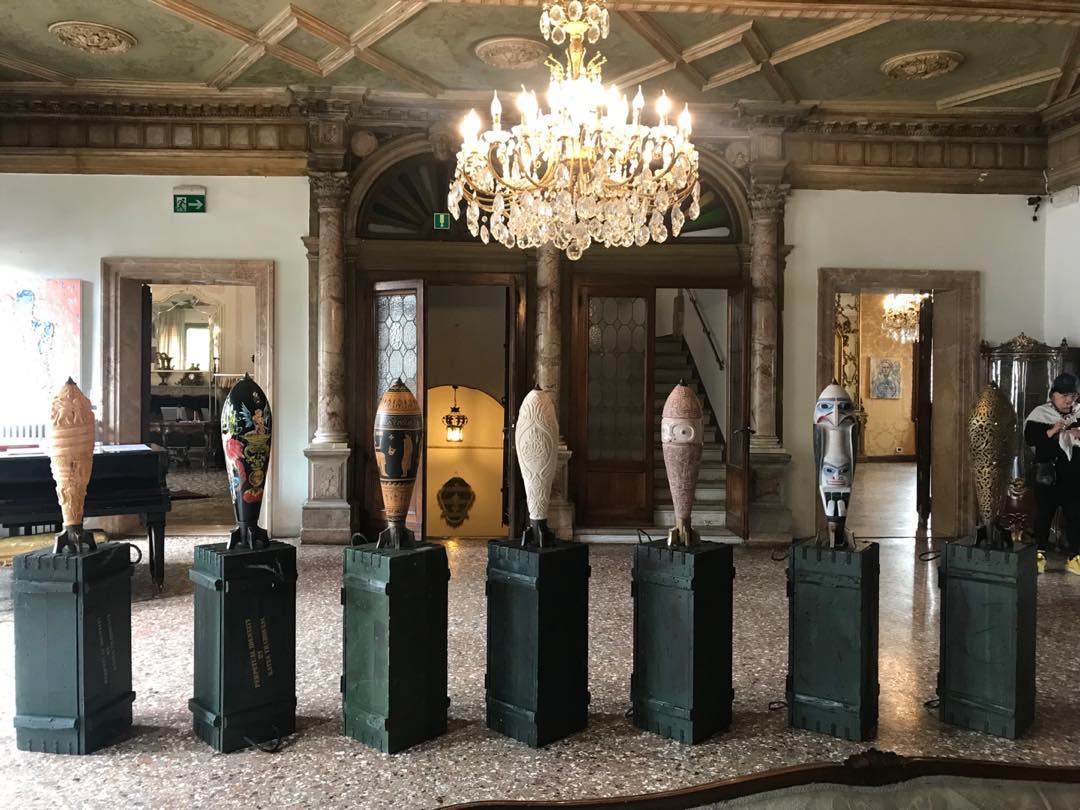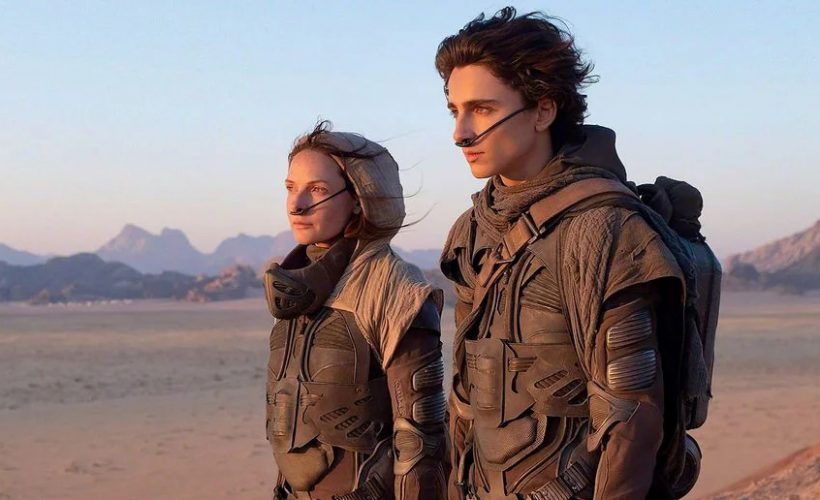Lifestyle
7.3.2019
Katya Traboulsi, art to silence the war

Katya Traboulsi is a multimedia artist who always explored the consequences of the Lebanese civil war on people. She is currently exhibiting Perpetual identities / The shell at Palazzo Ca’Zanardi in Venice, a work on the resistance of national identities and history, despite conflicts.
Her work, mixing both painting and sculpture, is characterized by the contrast between its flamboyant form and the darkness of its subjects. Her current solo exhibition, Perpetual Identities / The Shell, has also been presented at the Saleh Barakat Gallery in Beirut and the Dominique Fiat Gallery in Paris in 2018. It consists of a series of 46 pieces entirely handmade, decorated with bright colors and carved forms, each of which characterizes the national heritage and local know-how of a country. The ensemble composes a cathartic metamorphosis experience, transforming these military war objects into works of beauty and culture.
Can you introduce your project Perpetual identities / The shell?
Perpetual identities is a project that speaks about the identity of the world and the war that affects us all in an undifferentiated way. I grew up during the Lebanese civil war and after 15 years of conflict, there was no winner but religious identities strengthened up and divided us more. When the war in Syria broke out, I was living in Dubai, but it took me back to the conflict in Lebanon. The purpose of this work is to show that when a country is at war, the whole world is affected. I wanted to show what connects us to each other: History and culture. By tracing back the history of each country, I want to show that identity never dies and perpetuates itself always.
“I represented bomb shells used during the 80s in the Lebanese civil war because I believe that the bombs that fall on people’s heads, constitute an emotional shock that we can never get rid of.”
Is The Shell also a metaphor of the “wall” that we create individually and at the collective level?
This project was a way to silence the bombs. I represented the shells used during the 1980s in the Lebanese civil war because I believe that the bombs that fall on people’s heads, constitute an emotional shock that we can never get rid of. If we can forget the rocket fire and the street fights, the bombs are the most destructive elements physically and psychically on the human being. So I decided to cover these bombs with the identities of 45 countries, in order to “hide” the impact of the war. Perpetual identities / The shell is a peace project that shows that all nations are similar to a common story and heritage.
Besides, you used local materials for each piece of work you made: the white stone of Yemen, the pink granite of Aswan in Egypt. How did you work with all these craftsmen?
The project lasted for four years and I made 18 trips where I went to meet the craftsmen of the different countries represented. Some objects were manufactured in Lebanon, but for most of them, I traveled in a specific country to make it done. I went to China to do the porcelain work, to Egypt for sculpture on Granite and in Iran where I piece in miniature. All these objects were made by hand and transmit know-how, which makes them unique with a soul.
“I do not know where it will go, but at least I did something that I felt was needed.”
You had also curated an exhibition called Generation war in 2013. You seem haunted by the war…
After the war in Lebanon, there was a long moment of silence before people were ready to talk about it. In 2013 I was commissioner of this exhibition called Generation war, which exposed pictures of photojournalists made during the civil war when they were 20 years old. My goal was to show our future generations the experience of war, to reflect on its impact on human beings but also to be able to see the beauty of our humanity. Because I believe in the beauty of the human being. It was an amazing moment as everyone browsing the pictures remembered and had an amazing story to tell.
Do you think that art can heal the trauma of war?
I do not believe in miracles because I think there are forces bigger than us in this world, but at least I have left a testimony. I do not pretend anything with my work, except to leave a trace of a period of my life. I do not know where it will go, but at least I did something that I felt was needed.
popular

